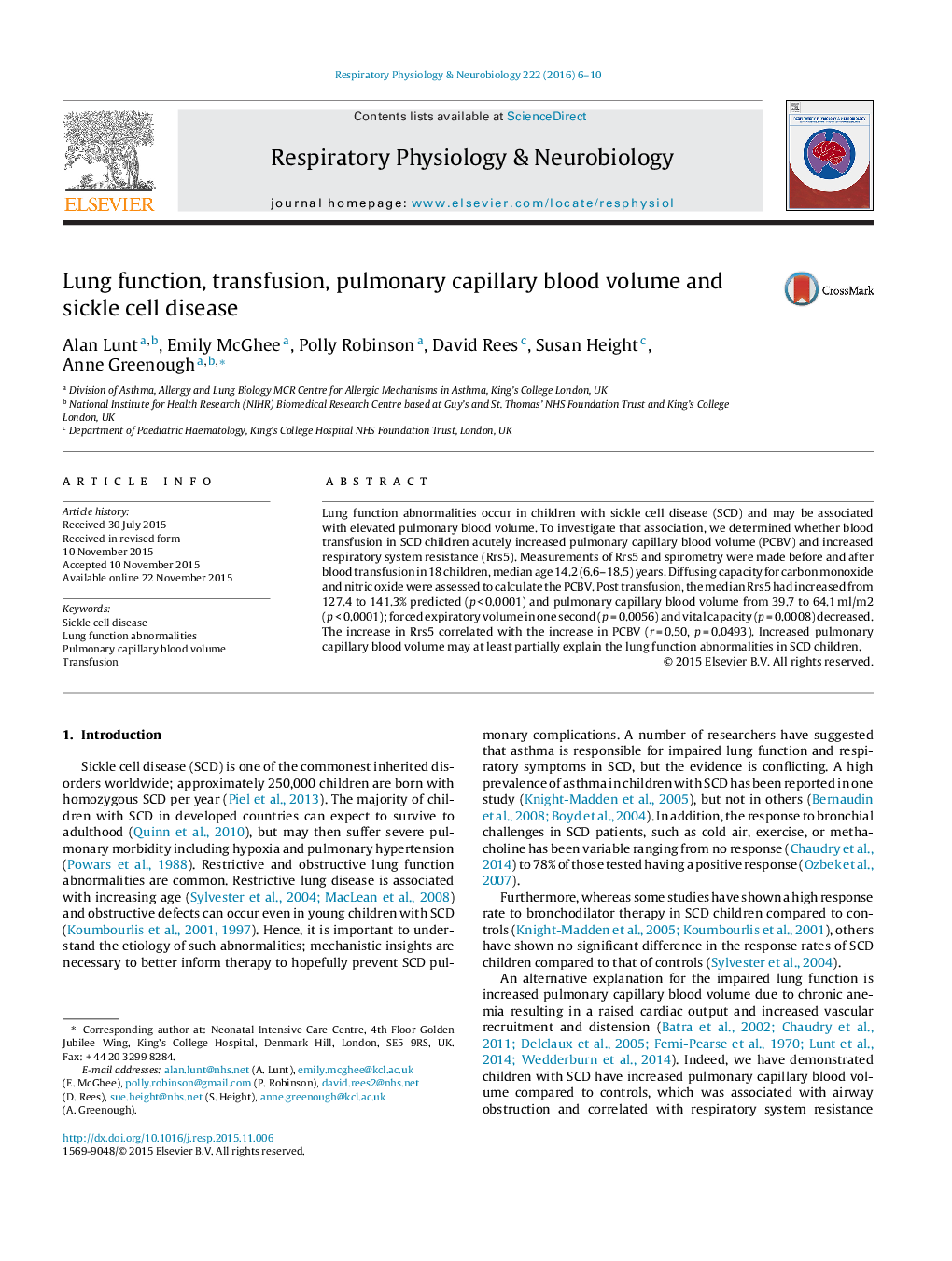| Article ID | Journal | Published Year | Pages | File Type |
|---|---|---|---|---|
| 2846699 | Respiratory Physiology & Neurobiology | 2016 | 5 Pages |
•Obstructive and restrictive lung function abnormalities occur in SCD children.•SCD children have increased pulmonary capillary blood volume (PCBV).•Respiratory system resistance and PCBV were measured before/after transfusion.•Respiratory system resistance and PCBV significantly increased post transfusion.•Increased PCBV may partially explain lung function abnormalities in SCD children.
Lung function abnormalities occur in children with sickle cell disease (SCD) and may be associated with elevated pulmonary blood volume. To investigate that association, we determined whether blood transfusion in SCD children acutely increased pulmonary capillary blood volume (PCBV) and increased respiratory system resistance (Rrs5). Measurements of Rrs5 and spirometry were made before and after blood transfusion in 18 children, median age 14.2 (6.6–18.5) years. Diffusing capacity for carbon monoxide and nitric oxide were assessed to calculate the PCBV. Post transfusion, the median Rrs5 had increased from 127.4 to 141.3% predicted (p < 0.0001) and pulmonary capillary blood volume from 39.7 to 64.1 ml/m2 (p < 0.0001); forced expiratory volume in one second (p = 0.0056) and vital capacity (p = 0.0008) decreased. The increase in Rrs5 correlated with the increase in PCBV (r = 0.50, p = 0.0493). Increased pulmonary capillary blood volume may at least partially explain the lung function abnormalities in SCD children.
